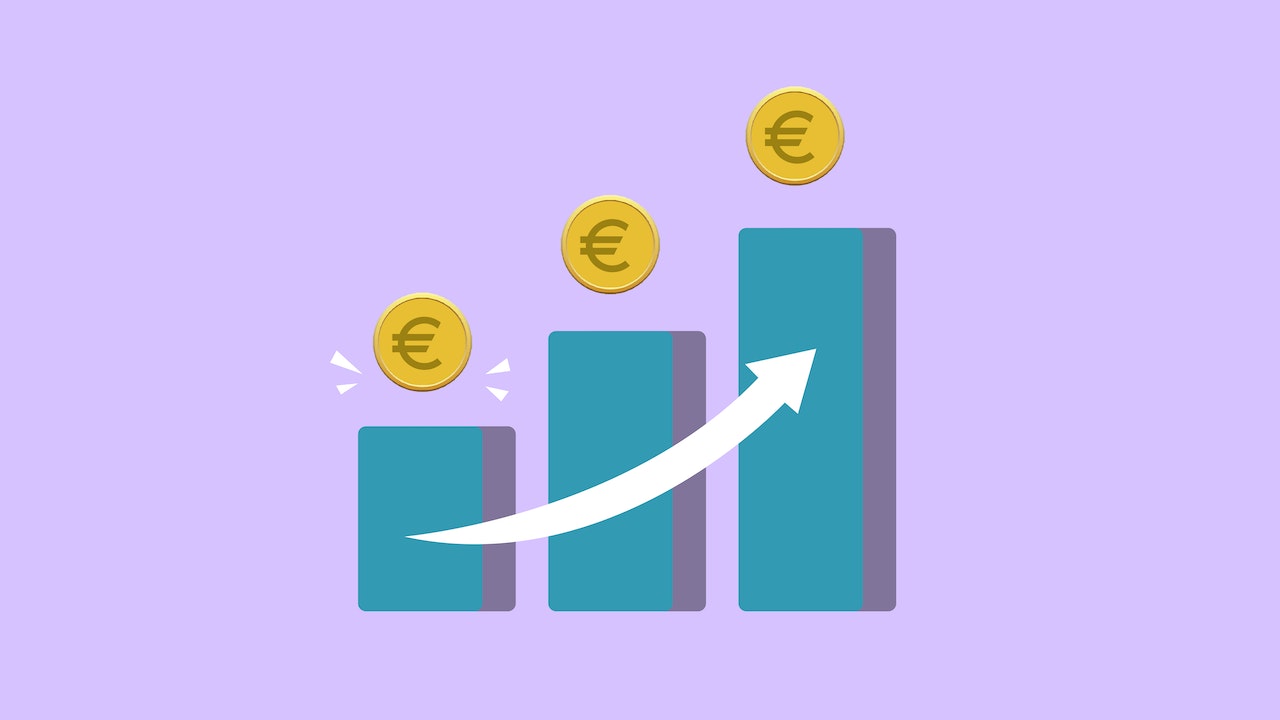In today’s crowded software-as-a-service (SaaS) market, having a sound pricing strategy is crucial for success. A pricing strategy is the method by which a company sets and adjusts the price of its products or services to achieve specific business objectives. It is an integral part of the overall go-to-market plan, as it directly impacts revenue, customer acquisition and retention, and market positioning.
There are multiple pricing strategies that a SaaS company can use to price its products or services. Each model has its own advantages and disadvantages, and the choice of a model depends on the company’s goals, target audience, and product characteristics. Some of the most commonly used pricing models in the SaaS industry include flat rate pricing, usage based pricing, tiered pricing, feature based pricing, freemium pricing, and value-based pricing.
In this blog, we will explore the different SaaS pricing strategies and discuss how to choose the right model for your go-to-market plan. We will also cover the role of customer success in SaaS pricing strategy and revenue optimization strategies for your go-to-market plan. Additionally, we will provide real-world examples of successful SaaS pricing strategies and lessons learned from failed pricing strategies in the context of go-to-market planning. By the end of this blog, you should have a better understanding of SaaS pricing strategy and how to optimize it within your go-to-market plan.
SaaS Pricing Models
Pricing is a crucial aspect of any SaaS company’s go-to-market strategy. There are various models available, and each has its own benefits and drawbacks. Choosing the right SaaS pricing model for your product can make or break your business. Here are the most common pricing models:
A. Flat Rate Pricing: Flat rate pricing is a straightforward model where customers pay a fixed price for using a product. It’s simple to understand and easy to budget for, making it an attractive option for customers. However, it may not be the most profitable pricing model for SaaS companies.
B. Usage Based Pricing: Usage-based pricing is a model where customers pay based on how much they use the product. This model is popular among SaaS companies that offer products with variable usage patterns, such as cloud storage or communication tools. It can be a profitable pricing model for companies as customers who use the product more pay more.
C. Tiered Pricing: Tiered pricing is a model where the product is offered at different price points with different levels of functionality. This model is useful for SaaS companies that have a wide range of customers with varying needs. Customers can choose the tier that best meets their requirements and budget.
D. Feature Based Pricing: Feature-based pricing is a model where customers pay for access to specific features of the product. This model is common among SaaS companies that offer products with a wide range of features. It can be profitable for SaaS companies as customers who need more features will pay more.
E. Freemium Pricing: Freemium pricing is a model where the product is offered for free with limited functionality, and customers pay for access to additional features. This model is popular among SaaS companies that want to attract a large number of customers and monetize them later. It can be an effective way to acquire new customers, but it may not be the most profitable pricing model for SaaS companies.
F. Value Based Pricing: Value-based pricing is a model where customers pay based on the value they receive from using the product. This model is useful for SaaS companies that offer products that solve a specific problem or provide a unique value proposition. It can be a profitable pricing model for SaaS companies as customers who derive more value from the product will pay more.
G. Active User Pricing: Active Users pricing is a variation of usage-based pricing where the value metric used to charge is based on the users that were active on the product each month. This is particularly valuable for customers that have peaks of activity during the year and don’t want to pay a flat fee. Although this pricing model might not be the best for generating a steady monthly recurring revenue, it can enable access to certain segments of customers.
H. Cost Based Pricing: Using cost as a basis for pricing is a popular (but not very effective) strategy. Though it ensures profitability, it doesn’t reflect the value conveyed to customers and may easily lead to uncompetitive pricing points.
Each of these pricing models has its own advantages and disadvantages, and choosing the right model depends on various factors such as the product’s features, target market, and competition. In some cases, a hybrid pricing approach might be the best-suited one. In the next section, we’ll discuss how to choose the right pricing model for your SaaS product based on your go-to-market plan.
Choosing the Right Pricing Model for Your Go-To-Market Plan
Once you have a clear understanding of the different pricing models available, it’s time to choose the right one for your SaaS company’s go-to-market plan. There are several factors to consider, including customer needs and preferences, competitive pricing analysis, target audience and buyer personas, customer research and feedback, and product positioning.
Analyzing customer needs and preferences
Understanding your potential customer’s needs and preferences is critical when selecting the right pricing model. For example, if your target audience values simplicity and predictability, a flat-rate pricing model might be the best fit. On the other hand, if your customers are more price-sensitive and value flexibility, a usage-based or tiered pricing model may be more appealing.
Competitive pricing analysis
Another important factor to consider is competitive pricing analysis. You’ll want to research how other SaaS companies in your industry are pricing their products and services. This information can help you understand what pricing models are most commonly used and how your pricing strategy compares to your competitors.
Identifying the target audience and buyer persona
Knowing your target audience and buyer personas is crucial for selecting the right pricing model. Are you targeting small businesses or large enterprises? Are your customers primarily in a particular industry or demographic? Understanding your customers’ unique characteristics and preferences can help you tailor your pricing model to better meet their needs.
Conducting customer research and feedback
To truly understand your customers’ needs and preferences, it’s essential to conduct customer research and feedback. This can include surveys, focus groups, and one-on-one interviews. By gathering feedback directly from your customers, you can gain valuable insights into what pricing model would work best for them.
Aligning pricing strategy with product positioning and go-to-market plan
Finally, it’s important to align your pricing strategy with your product positioning and go-to-market plan. For example, if you’re targeting a premium market segment, value-based pricing may be more appropriate. Conversely, if you’re focusing on customer acquisition and growth, a freemium pricing model may be the way to go. It’s essential to consider your overall business goals and objectives when selecting your pricing model.
Ultimately, the key to choosing what will be included in your pricing page is to understand your customers’ needs and preferences, analyze the competition, identify your target audience and buyer personas, conduct customer research and feedback, and align your pricing strategy with your overall business goals and objectives.
The Role of Customer Success in SaaS Pricing Strategy
Customer success plays a crucial role in SaaS pricing strategy, as customer satisfaction and retention are key components of the go-to-market plan. A successful pricing strategy needs to align with customer needs and preferences, which can be achieved by adopting customer-centric pricing approaches.
One effective way to increase customer engagement and loyalty is by offering personalized pricing plans based on individual customer needs. This approach can be achieved by gathering customer feedback and data, which can help identify usage patterns and specific needs. This data can be used to tailor pricing plans, creating more value for customers and increasing customer satisfaction. The larger your customers, the more important personalized pricing becomes.
Another important aspect of customer success in SaaS pricing strategy is the use of customer feedback to optimize pricing. By soliciting customer feedback on pricing, SaaS companies can identify pain points and areas for improvement, and adjust pricing plans accordingly. This feedback can also be used to optimize pricing for specific customer segments, improving customer satisfaction and retention.
Overall, customer success should be at the forefront of SaaS pricing strategy, as it is a key driver of customer satisfaction and retention. By adopting customer-centric pricing approaches and leveraging customer feedback, SaaS companies can create more value for customers, increase engagement and loyalty, and ultimately drive growth and revenue.
Revenue Optimization Strategies for Your Go-To-Market Plan
Pricing is a key component of any go-to-market plan, and a well-thought-out pricing strategy can be the difference between a successful product launch and a flop. However, it’s not enough to simply choose a pricing model and stick to it; to truly optimize your revenue, you need to consider different pricing strategies for customer acquisition, retention, and upselling.
Pricing for customer acquisition
Your price point can play a critical role in customer acquisition, as customers are often sensitive to price when making a purchasing decision. To optimize revenue during the acquisition stage, consider the following strategies:
- Penetration pricing: This strategy involves setting a low initial price to attract a large number of customers and gain market share quickly. Over time, the price can be gradually increased as the product gains traction and becomes more established.
- Freemium pricing: This strategy offers a basic version of the product for free, with the option to upgrade to a premium version for a fee. This can be an effective way to attract a large number of users and convert them into paying customers.
- Value-based pricing: This strategy involves setting prices based on the value the product provides to the customer. For example, a product that helps a business save time or money could be priced higher than a similar product that doesn’t provide the same level of value.
Pricing for customer retention and upselling
Once you’ve acquired customers, it’s important to keep them engaged and satisfied in order to retain them and maximize revenue through upselling. Here are some strategies to consider for existing customers:
- Subscription pricing: This model involves charging customers a recurring fee for access to the product or service. This can be an effective way to establish a predictable revenue stream and increase customer loyalty.
- Pricing tier: This strategy involves offering different pricing tiers with varying levels of features or functionality. This can be an effective way to upsell customers to higher tiers as their needs grow.
- Usage-based pricing: This model charges customers based on how much they use the product or service. This can be an effective way to align pricing with value and incentivize customers to use the product more.
Maximizing revenue through pricing optimization
To truly optimize revenue, it’s important to continually monitor and adjust your pricing structure. Here are some best practices for pricing optimization:
- Conduct A/B testing: Test different pricing strategies with small groups of customers to see which performs best.
- Monitor customer behavior: Use data analytics to track customer behavior and adjust pricing strategies accordingly.
- Consider bundling: Offer packages of products or services at a discounted rate to encourage customers to buy more.
Scaling pricing strategy in line with the go-to-market plan
As your go-to-market plan evolves and your customer base grows, it’s important to continually adjust your pricing strategy to ensure that it’s aligned with your overall goals. Consider the following strategies:
- Add new pricing tiers: As your product evolves and offers new features or functionality, consider adding new pricing tiers to reflect the increased value.
- Adjust pricing based on customer feedback: Solicit customer feedback and adjust pricing strategies to better align with their needs and preferences.
- Consider regional pricing: Adjust pricing based on regional factors such as local market conditions or currency fluctuations.
By using these revenue optimization strategies, you can ensure that your pricing strategy is aligned with your overall go-to-market plan, and maximize revenue from your SaaS product.
Case Studies and Examples
Real-world examples can be a valuable source of inspiration and learning for SaaS companies looking to optimize their pricing strategy. Here are some examples of successful SaaS pricing strategies and lessons learned from failed attempts:
Successful SaaS Pricing Strategies
- HubSpot: HubSpot is a leading provider of inbound marketing, sales, and customer service software. They use a tiered pricing model based on the number of contacts a customer has in their database. This model allows them to cater to customers of all sizes, from startups to enterprise-level businesses.
- Dropbox: Dropbox is a cloud storage and file-sharing service that offers a freemium pricing model. Their free plan allows users to store and share files up to a certain amount, while paid plans offer additional storage and features. This pricing model has helped Dropbox acquire a large user base and retain customers over time.
- Salesforce: Salesforce is a cloud-based customer relationship management (CRM) platform that offers a variety of pricing models, including per-user pricing and tiered pricing based on features. They also offer value-based pricing, which allows customers to pay based on the value they receive from the platform. This model helps customers feel like they are getting a fair deal and encourages them to stick with the platform.
Lessons Learned from Failed SaaS Pricing Strategies
- Evernote: Evernote is a note-taking and productivity app that faced backlash from users when they changed the pricing model in 2016. The new model increased prices for some users and restricted access to certain features. This resulted in a wave of negative reviews and a drop in customer retention.
- MoviePass: MoviePass was a subscription service that allowed users to see unlimited movies for a monthly fee. The company faced financial difficulties due to a flawed pricing strategy that did not account for the high cost of movie tickets. This is a case where a cost-based strategy might have been a better approach.
- QuickBooks Self-Employed: QuickBooks initially offered a low-priced subscription with limited features but later switched to a higher-priced tiered pricing model. This led to a significant backlash from users who felt the new pricing plan was unfair and not aligned with their needs. The company eventually had to backtrack on the pricing changes, which resulted in a loss of customer trust and revenue. This highlights the importance of carefully analyzing customer needs and preferences before implementing pricing changes.
These examples highlight the importance of understanding customer needs and preferences, conducting thorough market research, and aligning pricing strategies with the value provided by the product or service.
Key Takeaways and Future Trends
In summary, a well-designed pricing strategy is crucial to the success of any SaaS business, as it affects everything from customer acquisition to revenue optimization. There are various pricing models available, including flat rate pricing, usage-based pricing, tiered pricing, feature-based pricing, freemium pricing, and value-based pricing, each with its own advantages and disadvantages.
To choose the right pricing model for your go-to-market plan, it’s essential to analyze customer needs and preferences, conduct competitive pricing analysis, identify your target audience and buyer personas, and align your pricing strategy with your product positioning and go-to-market plan. Additionally, customer success plays a critical role in your pricing strategy, as customer satisfaction and retention are key to achieving your revenue goals.
Future Trends and Developments in SaaS Pricing Strategy
As technology and customer needs continue to evolve, SaaS pricing strategies must adapt to meet new demands. One emerging trend is the use of value metrics to determine pricing, such as charging based on the number of users, the amount of data storage, or the volume of transactions. Another trend is the use of AI and machine learning to optimize pricing in real time based on customer behavior and market conditions.
To optimize your SaaS pricing strategy within your go-to-market plan, start by identifying your target audience and conducting customer research and feedback to understand their needs and preferences. Analyze your competitors’ pricing strategies and align your pricing with your product positioning and go-to-market plan. Additionally, prioritize customer success and use customer feedback to continually refine and optimize your pricing strategy. Finally, keep an eye on emerging trends and technologies to ensure your pricing strategy remains competitive and effective.




